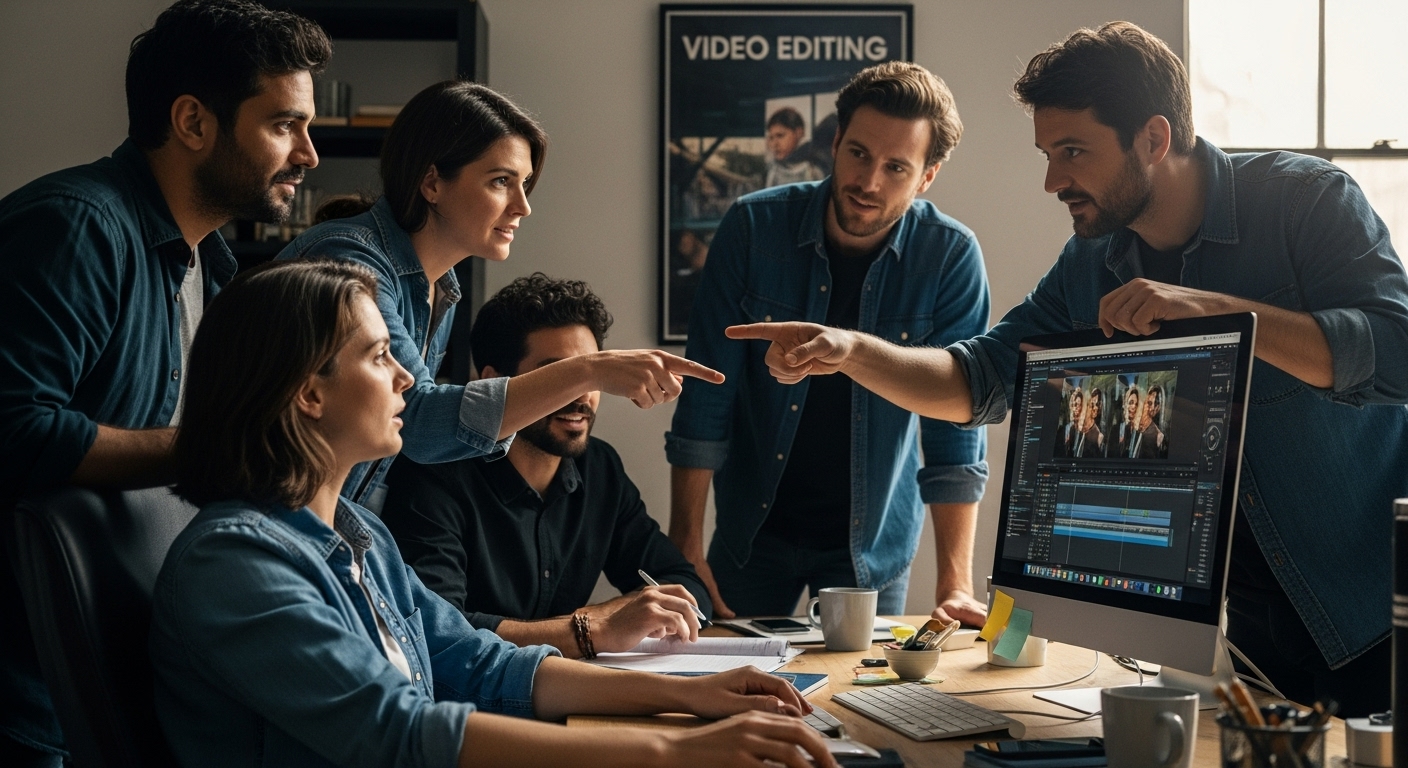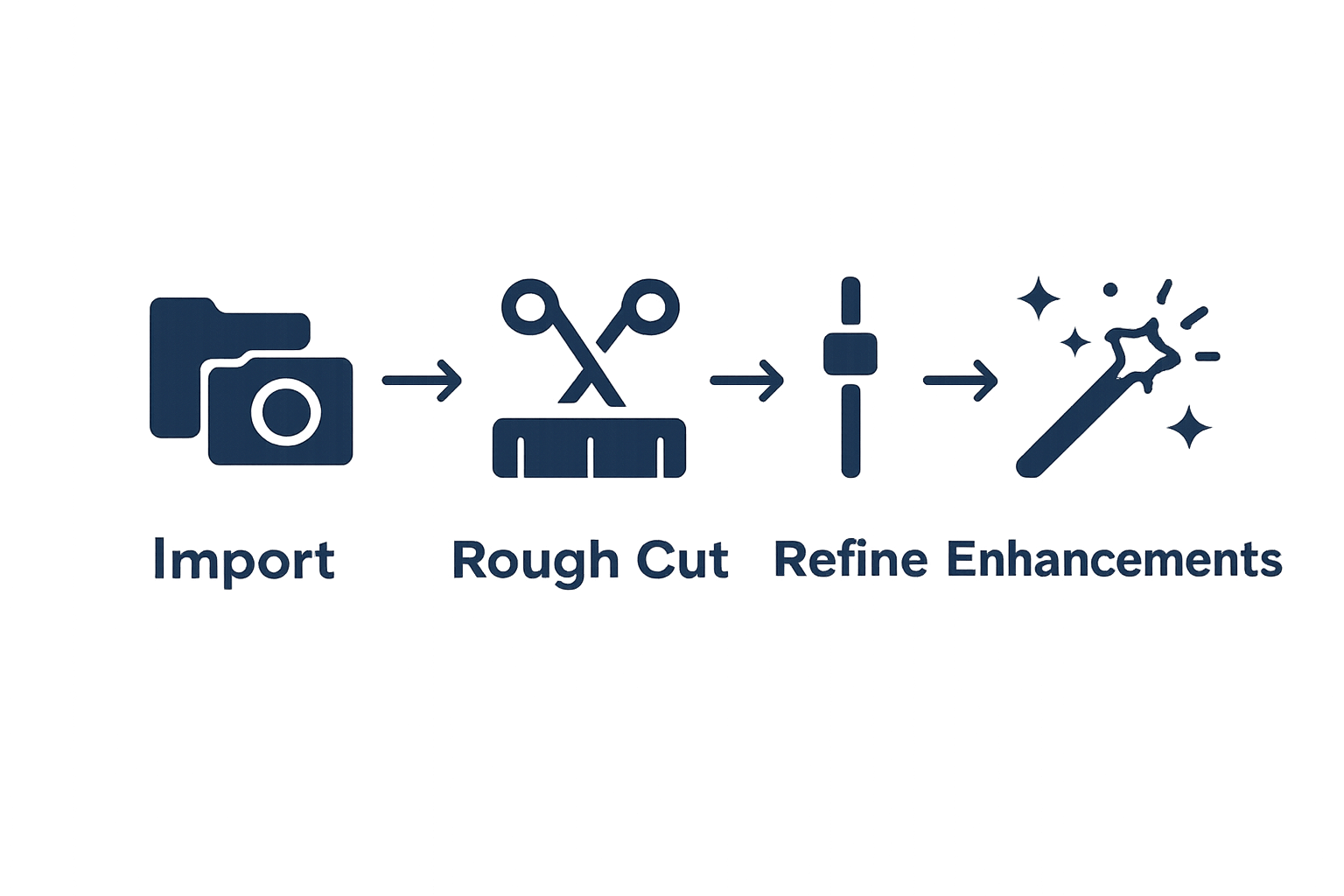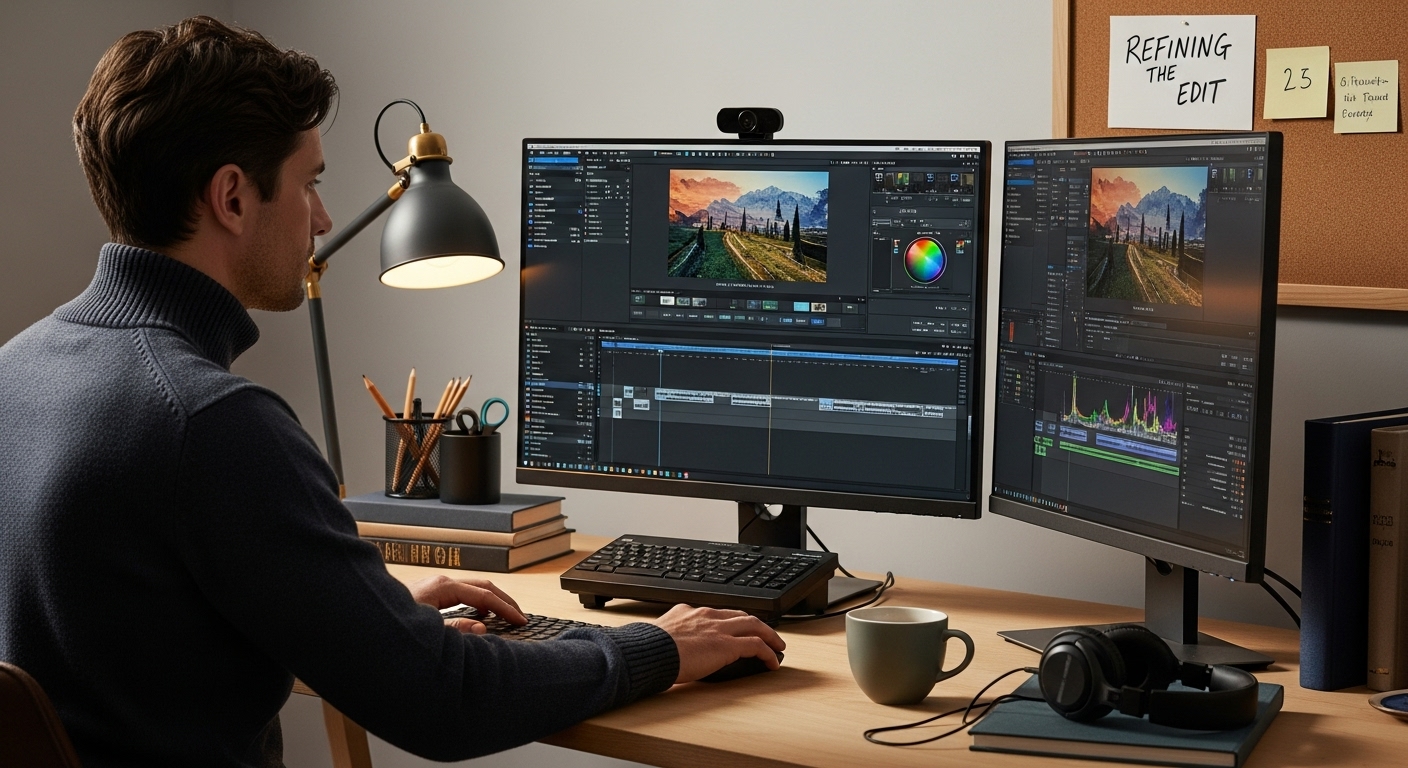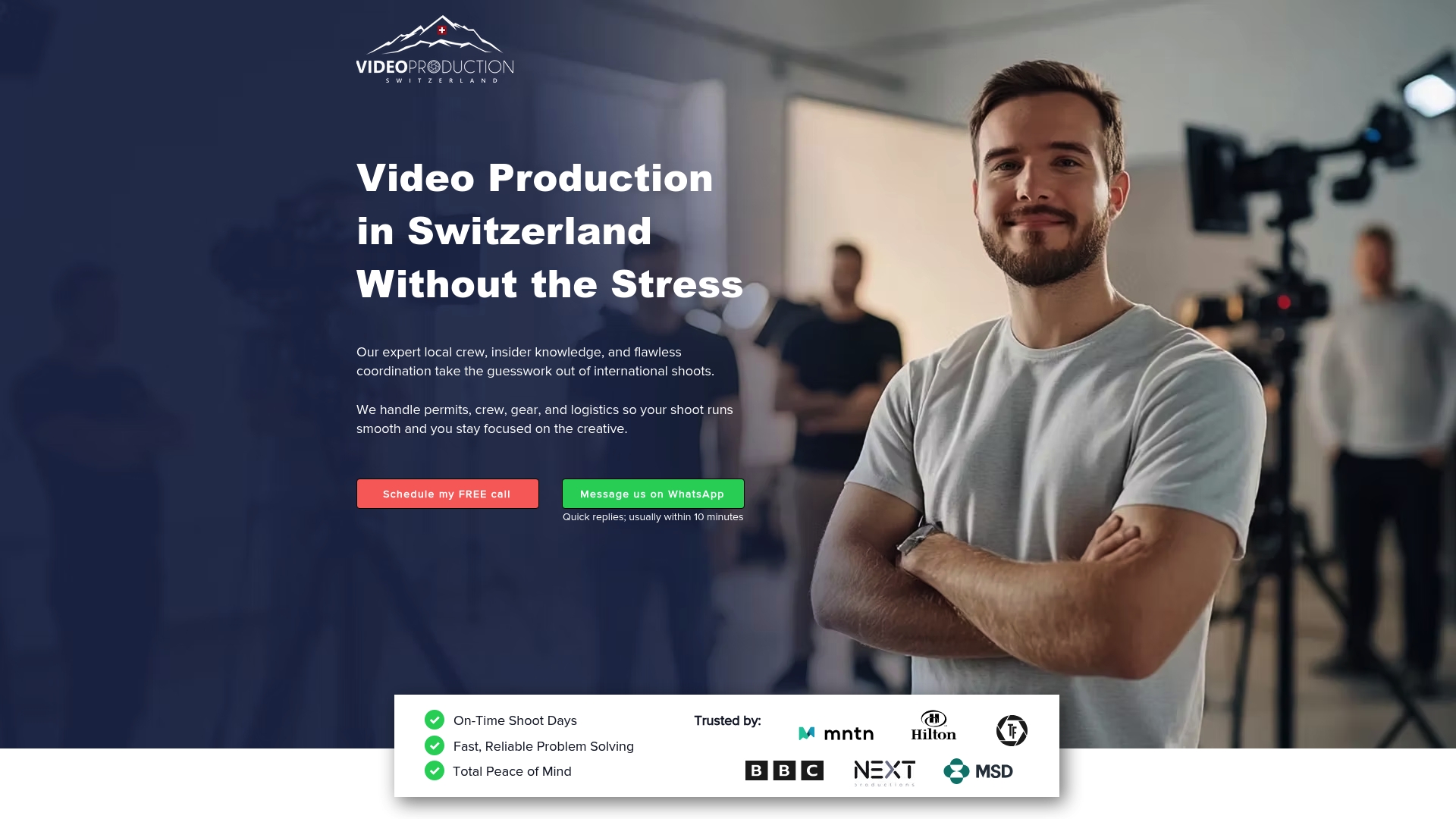Understanding the Stages of Video Editing for Creatives
- info1419758
- Sep 27
- 7 min read

Video editing turns raw footage into art, shaping how we experience stories on screens everywhere. A single editor can sift through over 100 hours of footage to create a film that lasts just 90 minutes. That sounds exhausting or maybe even repetitive. Yet each stage of the editing process is a chance to completely rewrite the story’s emotion, pace, and meaning in ways most viewers never spot.
Table of Contents
Quick Summary
Takeaway | Explanation |
Editing stages shape narrative intention | Each stage of editing allows editors to make artistic choices that enhance story flow and emotional engagement. |
Technical skills enhance storytelling | Understanding editing software and tools is crucial for creating cohesive and engaging narratives. |
Post-production elevates quality | This stage involves refining visuals and audio to create a polished final product ready for audience consumption. |
Distribution strategies influence effectiveness | Preparing media for various platforms ensures it meets audience expectations and technical requirements for optimal viewing. |
Defining the Stages of Video Editing
Video editing represents a sophisticated creative process that transforms raw footage into compelling visual narratives. Professional video editors navigate multiple complex stages, each requiring unique skills, technical knowledge, and artistic vision. Understanding video post production workflow provides deeper insights into this intricate process.
The Conceptual Framework of Video Editing
Video editing is not merely about cutting and arranging clips but constructing a narrative language through strategic visual manipulation. Professional editors approach their craft as visual storytellers, recognizing that each edit represents a deliberate communication choice.
The following table summarizes the key stages of professional video editing, highlighting the main focus and core activities of each stage for quick comparison.
Editing Stage | Main Focus | Core Activities |
Ingesting and Organizing Footage | Preparation and organization | Importing video, categorizing clips, file management |
Creating a Rough Cut | Establishing narrative structure | Assembling clips, basic sequencing, initial story layout |
Refining the Edit | Enhancing narrative flow and pacing | Trimming, reordering, adjusting timing, fine-tuning cuts |
Adding Visual and Audio Enhancements | Polishing and emotional engagement | Color correction, sound design, adding effects and graphics |
Post-Production Final Touches | Final polish and technical optimization | Quality checks, exporting, preparing files for distribution |
The fundamental stages of video editing typically include:

Ingesting and Organizing Footage: Systematically importing and categorizing all recorded video materials
Creating a Rough Cut: Assembling initial sequence of clips to establish narrative structure
Refining the Edit: Precisely trimming and adjusting clip sequences for narrative flow
Adding Visual and Audio Enhancements: Incorporating color correction, sound design, and special effects
Technical and Creative Dimensions
Successful video editing requires a harmonious blend of technical precision and creative intuition. Editors must understand both the mechanical aspects of software tools and the psychological impact of visual storytelling.
VIDEO:video_content] According to [Adobe Creative Professional Guidelines, effective editing transforms disconnected footage into a cohesive narrative experience.
Professional video editing demands mastery of complex software, deep understanding of pacing, emotional resonance, and technical proficiency. Each stage represents a calculated artistic decision that shapes audience perception, emotional engagement, and overall narrative effectiveness. By meticulously navigating these stages, video editors breathe life into visual stories, turning raw recordings into powerful, meaningful experiences.

The Importance of Each Editing Stage
Video editing stages are not merely technical procedures but strategic opportunities to transform raw visual content into powerful storytelling experiences. Understanding video production and post production essentials provides context for how these intricate stages contribute to final narrative quality.
Creative and Strategic Significance
Each editing stage serves a distinct purpose that goes beyond simple clip arrangement. These stages represent critical decision points where editors shape narrative intention, emotional resonance, and visual communication. Professional editors understand that every edit is a deliberate artistic choice that influences audience perception and engagement.
Key strategic considerations during editing include:
Narrative Flow: Ensuring smooth progression of story elements
Emotional Pacing: Controlling rhythm and emotional intensity
Visual Coherence: Maintaining consistent visual language
Technical Quality: Preserving and enhancing visual and audio standards
Psychological and Technical Interplay
Editing stages reflect a complex interplay between psychological understanding and technical execution. According to Stanford University’s Film and Media Studies Research, effective editing requires nuanced comprehension of human perception, emotional triggers, and visual communication principles.
The transformative power of editing lies in its ability to recontextualize raw footage, creating meaning through strategic arrangement and manipulation. Each stage represents an opportunity to refine, clarify, and amplify the original creative vision. Professional editors do not simply cut and splice but craft intricate visual experiences that resonate deeply with audiences, turning technical processes into profound storytelling mechanisms.
Techniques and Tools Used in Video Editing
Video editing involves an intricate ecosystem of sophisticated techniques and advanced technological tools that transform raw visual content into compelling narratives. Understanding video production techniques for impactful storytelling provides deeper context into the nuanced world of professional editing.
Core Editing Techniques
Professional video editing encompasses a diverse range of techniques designed to manipulate visual and emotional narrative flow. Editors employ strategic approaches that go beyond simple clip arrangement, utilizing methods that fundamentally reshape audience perception and storytelling dynamics.
This table compares core video editing techniques and their primary purpose, helping creatives choose the appropriate method to achieve their storytelling goals.
Technique | Purpose |
Continuity Editing | Maintain seamless visual progression and spatial logic |
Montage Editing | Create meaning through juxtaposition and sequencing |
Jump Cut Techniques | Add stylistic or emotional impact by breaking flow |
Parallel Editing | Present multiple narrative threads simultaneously |
Key editing techniques include:
Continuity Editing: Maintaining seamless visual progression and spatial logic
Montage Editing: Creating meaning through strategic sequence and juxtaposition
Jump Cut Techniques: Breaking traditional narrative flow for stylistic or emotional impact
Parallel Editing: Simultaneously presenting multiple narrative threads
Professional Editing Software and Technology
Modern video editing relies on sophisticated software platforms that provide unprecedented creative control. According to Encyclopaedia Britannica’s Film Editing Research, professional editors leverage complex technological ecosystems that integrate advanced visual manipulation tools with intricate workflow management capabilities.
Professional editing tools transcend mere technical functionality, serving as creative platforms that enable visual storytellers to translate complex narrative visions into tangible visual experiences. By mastering both technological tools and creative techniques, editors transform fragmented visual recordings into cohesive, emotionally resonant storytelling mediums that engage and captivate audiences across diverse media platforms.
Post-Production: Final Touches and Distribution
Post-production represents the critical final phase where raw visual materials are transformed into polished, professional media ready for audience consumption. Balancing cost and quality in media production becomes particularly crucial during these concluding stages of video editing.
Refinement and Enhancement Processes
The post-production stage involves sophisticated techniques that elevate visual and audio quality beyond initial raw recordings. Professional editors employ advanced color grading, sound mixing, and visual effects to create a cohesive and compelling final product. This phase is not merely technical refinement but an artistic process of narrative optimization.
Key post-production enhancement strategies include:
Color Correction: Establishing visual consistency and emotional tone
Sound Design: Integrating audio elements that complement visual narrative
Visual Effects: Adding sophisticated graphics or digital enhancements
Final Quality Checks: Ensuring technical and creative standards are met
Distribution and Delivery Strategies
Modern post-production extends beyond technical refinement to include comprehensive distribution planning. According to Media Distribution Research by the International Communications Association, successful media delivery requires strategic considerations of platform compatibility, audience targeting, and technical specifications.
Professional video editors must now navigate a complex ecosystem of digital platforms, each with unique technical requirements and audience expectations. This involves preparing media in multiple formats, optimizing for different screen sizes, and ensuring seamless playback across diverse digital environments. The post-production stage has evolved from a purely technical process to a strategic communication mechanism that bridges creative vision with audience engagement.
Elevate Your Storytelling with Expert Production Support
Struggling to bridge the gap between creative video editing stages and flawless on-location execution? This article shines a light on how each editing stage—from organizing footage to post-production delivery—demands careful planning, technical skill, and creative control. But even the best editing cannot shine if your raw material arrives with logistical problems, permit issues, or equipment hiccups. Ensuring a seamless workflow starts long before your footage hits the editing suite.

Let Video Production Switzerland handle the details that empower your creative vision. We manage permits, trusted crew, gear, and all those headaches that can derail your narrative before editing ever begins. Discover how our expertise removes stress so you can focus on storytelling. Ready to unlock a smooth edit from start to finish? Visit our home page and schedule your free consultation today. Your story deserves production support that matches the quality of your edit. Act now to secure reliable, local support for your next project.
Frequently Asked Questions
What are the main stages of video editing?
The main stages of video editing typically include ingesting and organizing footage, creating a rough cut, refining the edit, and adding visual and audio enhancements.
How do editors ensure narrative flow during video editing?
Editors ensure narrative flow by strategically assembling clips to create a seamless progression of story elements, carefully adjusting pacing and ensuring visual coherence.
What role does post-production play in video editing?
Post-production is the final phase where raw footage is polished through color correction, sound design, visual effects, and final quality checks to create a cohesive and engaging final product.
What techniques are commonly used in professional video editing?
Common techniques in professional video editing include continuity editing, montage editing, jump cuts, and parallel editing, each serving to manipulate visual and emotional narrative flow.
Recommended

Comments